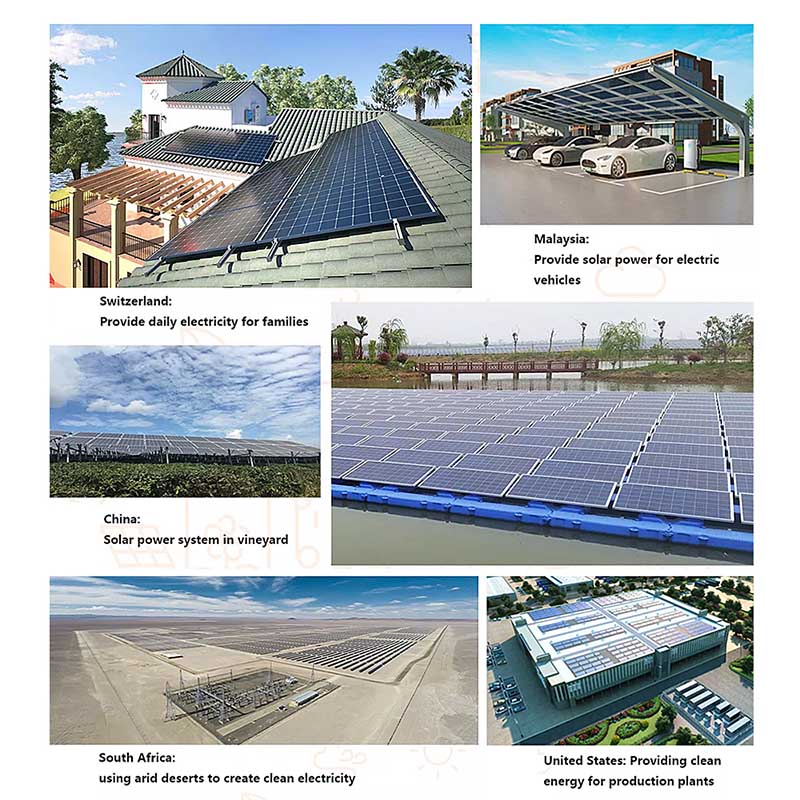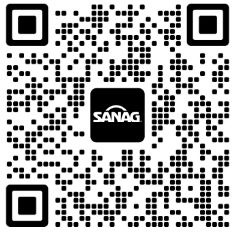Photovoltaic and energy storage industry - solar power inverter
 Apr 28,2022
Apr 28,2022

 Rekesun
Rekesun
1. Solar Power Inverter Industry introduction
The function of the solar power inverter is to convert DC power, such as batteries, storage batteries, etc., into a converter of constant frequency and constant voltage or AC power (such as the commonly used 220V AC power).
solar power inverters in the new energy industry are mainly used in photovoltaic and energy storage fields. Among them, the photovoltaic solar power inverter is one of the main components of the photovoltaic power generation system. It is the key to ensure the long-term reliable operation of the photovoltaic power station by connecting the photovoltaic array and the power grid. The energy storage solar power inverter can control the charging and discharging process of the battery and perform AC-DC conversion.
In the entire photovoltaic system, although the photovoltaic solar power inverter accounts for only 8%-10% of the total cost, it is responsible for the AC-DC conversion, power control, on-grid switching and other important functions of the entire system, and is also responsible for the entire system. The intelligent control of the photovoltaic system plays the role of the brain, so the importance is self-evident.
According to the classification of solar power inverters, the current market mainstream is concentrated solar power inverters, string solar power inverters, and household solar power inverters, while other solar power inverters account for a very small share.
1. Concentrated solar power inverter: large in size, high in power and good in economy, it is widely used in large and medium-sized photovoltaic power generation systems such as deserts, plateaus, and commercial roofs.
2. String solar power inverter: small size, moderate power, widely used in small and medium photovoltaic power generation systems such as parking lots, commercial roofs, farms, etc.
3. Household solar power inverter: high appearance, simple installation and maintenance, with energy storage interface and various communication methods, to meet the requirements of different application environments such as indoor and outdoor, widely used in residential photovoltaics such as residential roofs and courtyards Power system.

The above three types of solar power inverters correspond to three types of solar power inverters with different application scenarios: large, medium and small. In 2021, the installed capacity of household photovoltaic projects will increase by 187% year-on-year, becoming the largest source of new installed capacity. Therefore, the use of string solar power inverters has increased, and the market share has increased to 66%. Therefore, companies with a high proportion of string solar power inverters have relatively greater flexibility.
The solar power inverter segment benefits from both the photovoltaic and energy storage industries at the same time, and the overseas market share continues to increase. Under the multi-wheel drive, the growth rate of the domestic solar power inverter industry is significantly higher than that of other segments of the industry. The rapid development trend of photovoltaics and energy storage has no doubts, although the process may be tortuous.
2. Solar Power Inverter Industry characteristics
1. Asset-light operation mode, heavy brand effect
The fixed assets of solar power inverter companies are relatively light, and the ROE is relatively high, which can reach about 30%, which is not only higher than that of silicon wafers, batteries, modules, etc., but also higher than that of many manufacturing companies, indicating that the profitability is very strong.
Although the cost of solar power inverters does not account for a high proportion of the total cost of photovoltaic systems, if there is a failure, it will cause a large area of the system to be paralyzed, so customers will tend to choose leading brands. According to offline research, some large customers of state-owned enterprises only recognize first- and second-tier big brands, and small brands will not be considered at all. If you are the decision maker, in the face of such inexpensive but very important components, you may be more willing to choose a big brand with good quality and more guaranteed after-sales.
The solar power inverter is to C end, so the brand will be one of the core competitiveness of the company. The higher popularity and reputation can continuously consolidate the company's market position, occupy the minds of consumers, and enjoy a higher market premium.
2. Channels and Services
The residential and distributed markets are mainly sold through channels, which are dominated by system integrators and installers. The development cycle of distribution channels is long and the stickiness is high. Customers also value after-sales service capabilities, so they can build deeper barriers to corporate competition.
Therefore, the solar power inverter is the most valuable link in the photovoltaic industry chain, because most of the other links produce homogeneous products, and most downstream customers are to B, and the bargaining power is weak, and continuous reductions are required. cost. In comparison, solar power inverters are non-standard products with brand effects, and the moat is relatively deeper.
3. Solar Power Inverter Industry status and competition
In addition to the epidemic factor, domestic enterprises can continue to conquer cities overseas, and it is also related to their own strong comprehensive competitiveness, which is embodied in:
1. It has advantages in terms of cost performance, and it is about 50-70% off foreign products. This has always been our advantage. In addition, although our price is lower than that of overseas brands, the overseas selling price is still significantly higher than the domestic selling price, so the gross profit margin of overseas sales will be significantly higher than that of domestic brands, resulting in higher overseas market share and stronger company profitability. For example, both Jinlang and GoodWe account for more than 60% of overseas revenue, and Sungrow also accounts for 30%.
2. Rich in categories and unique advantages in performance. The advantages are also very obvious. For example, when the power is similar, the domestic solar inverter has a wider operating temperature and is suitable for a variety of ground scenarios, and so on. At the same time, the domestic solar inverter product research and development speed is faster.
3. The domestic solar inverter has a long warranty period, with an average of 10 years, which basically covers the entire life cycle of the solar inverter. The service ability is excellent, and it is also the confidence in the quality of its own products.
Through the global layout, not only can higher profit margins be obtained, but also the instability of corporate performance can be further smoothed, and the company's ability to resist risks can be improved.
The valuation of the solar inverter segment is high for a reason. The most important thing is not the valuation level, but the ability to maintain high growth. According to the previous backtest data of Rekesun Solar, when the growth rate exceeds 30%, the valuation level is not the most important factor, and the growth with high certainty is more scarce in the market.
Finally, in the solar inverter industry, we are more optimistic about Rekesun Solar. Rekesun group is an international high-tech growth group company , specializing in R & D which manufactures new energy sells, modules, and new energy power generation systems. It focuses on cells , modules and solar power generation engineering, manufacturing engineering and management system,built up the international management and technology R&D team Rekesun group plans to develop in the fields of portable energy storage equipment, household energy storage systems, planted energy storage systems,communication base station energy storage battery projects, so as to become one of the largest new energy and energy storage bases and build the most influential green energy brand. up-rising star in the industry.



 Home
Home Three major considerations for wholesale purchase of household solar photovoltaic inverters
Three major considerations for wholesale purchase of household solar photovoltaic inverters 







 syplighting.en.alibaba.com
syplighting.en.alibaba.com



